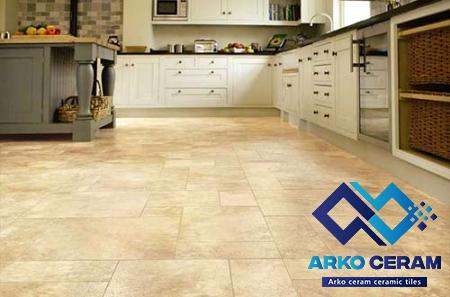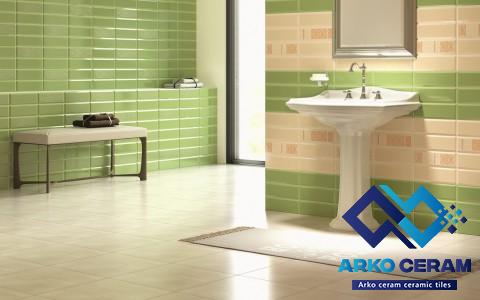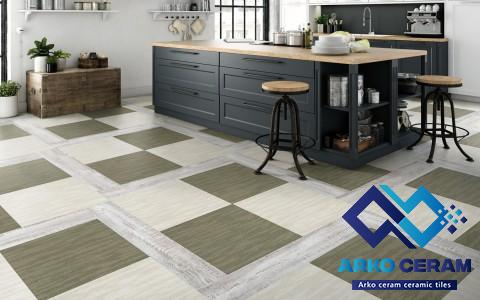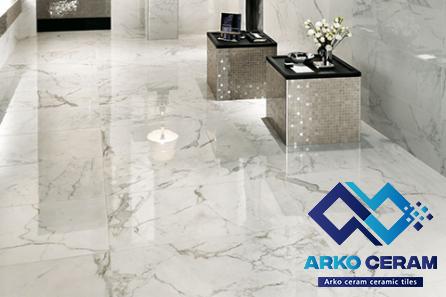When it comes to home renovation, the selection of floor and wall tiles undoubtedly plays a vital role in transforming the overall aesthetics and ambiance of your space. Tiles not only enhance the visual appeal of your home but also provide durability and functionality. However, with so many options available in the market, it can be overwhelming to choose the right tiles that best suit your needs and preferences. In this comprehensive guide, we will take you through the process of selecting floor and wall tiles first and provide you with valuable insights to help you make an informed decision. 1. Understanding the Basics of Floor Wall Tiles: a. Different Types of Tiles: Tiles are available in various materials such as ceramic, porcelain, natural stone, glass, and more. Each type has its unique characteristics and qualities, making it suitable for different areas of your home. b. Size and Shape: Tiles come in different sizes and shapes, ranging from small mosaic tiles to large format tiles, offering a wide range of design possibilities for your floor and walls. c. Finish and Texture: Tiles come in multiple finishes including polished, matte, textured, glazed, and more. The choice of finish not only affects the appearance but also impacts the functionality and maintenance of the tiles. 2. Factors to Consider When Choosing Tiles: a. Budget: Determine your budget and explore the options available within your price range. It is essential to strike a balance between quality and affordability. b. Durability: Consider the area where the tiles will be installed and evaluate its durability requirements. High-traffic areas such as the kitchen and hallway might require more durable tiles. c. Style and Aesthetics: Think about the overall theme and style of your home. Choose tiles that complement the existing décor and create a harmonious visual flow. d. Maintenance: Consider the amount of time and effort you are willing to invest in cleaning and maintenance. Some tiles may require more frequent maintenance than others. e. Safety: For areas prone to moisture, such as bathrooms and kitchens, choose tiles that provide slip resistance to ensure safety.

.
 3. Selecting Tiles for Different Areas of Your Home: a. Living Room: For the living room, you can opt for tiles that exude elegance and comfort, such as large format porcelain tiles, natural stone tiles, or wood-look tiles. b. Kitchen: In the kitchen, durability and resistance to stains and spills are crucial. Consider options like glazed porcelain tiles, ceramic tiles, or even natural stone tiles with a proper sealant. c. Bathroom: Moisture-resistant tiles are a must for bathroom floors and walls. Choose tiles with a textured or matte finish for better traction and consider options like porcelain or glass mosaic tiles for added visual appeal. d. Bedroom: In the bedroom, tiles that create a cozy and warm environment are ideal. Wood-look tiles or natural stone tiles in warmer tones can effectively achieve this. e. Outdoor Spaces: For outdoor areas like patios or balconies, tiles need to be weather-resistant and durable. Consider materials like porcelain or natural stone tiles with a slip-resistant finish. 4. Tile Installation and Care: a. Hiring a Professional: While some DIY enthusiasts may be able to handle tile installation themselves, it is often best to hire a professional who has the necessary expertise and tools to ensure a flawless and long-lasting installation. b. Proper Tile Care: Once your tiles are installed, regular cleaning and maintenance are essential to preserve their beauty and extend their lifespan. Follow manufacturer’s instructions for cleaning products and techniques specific to your tile material. 5. Staying Up-to-Date with Tile Trends: a. Colours and Patterns: Tile trends evolve over time, and staying updated on the latest colours and patterns can help you infuse new life into your space. Currently, bold colors and geometric patterns are on-trend. b. Textured Tiles: Textured tiles can add depth and dimension to your space, creating an eye-catching feature wall or a statement floor. c. Sustainable Tiles: As eco-consciousness grows, more homeowners are opting for sustainably sourced tiles made from recycled materials or tiles that require less energy in production.
3. Selecting Tiles for Different Areas of Your Home: a. Living Room: For the living room, you can opt for tiles that exude elegance and comfort, such as large format porcelain tiles, natural stone tiles, or wood-look tiles. b. Kitchen: In the kitchen, durability and resistance to stains and spills are crucial. Consider options like glazed porcelain tiles, ceramic tiles, or even natural stone tiles with a proper sealant. c. Bathroom: Moisture-resistant tiles are a must for bathroom floors and walls. Choose tiles with a textured or matte finish for better traction and consider options like porcelain or glass mosaic tiles for added visual appeal. d. Bedroom: In the bedroom, tiles that create a cozy and warm environment are ideal. Wood-look tiles or natural stone tiles in warmer tones can effectively achieve this. e. Outdoor Spaces: For outdoor areas like patios or balconies, tiles need to be weather-resistant and durable. Consider materials like porcelain or natural stone tiles with a slip-resistant finish. 4. Tile Installation and Care: a. Hiring a Professional: While some DIY enthusiasts may be able to handle tile installation themselves, it is often best to hire a professional who has the necessary expertise and tools to ensure a flawless and long-lasting installation. b. Proper Tile Care: Once your tiles are installed, regular cleaning and maintenance are essential to preserve their beauty and extend their lifespan. Follow manufacturer’s instructions for cleaning products and techniques specific to your tile material. 5. Staying Up-to-Date with Tile Trends: a. Colours and Patterns: Tile trends evolve over time, and staying updated on the latest colours and patterns can help you infuse new life into your space. Currently, bold colors and geometric patterns are on-trend. b. Textured Tiles: Textured tiles can add depth and dimension to your space, creating an eye-catching feature wall or a statement floor. c. Sustainable Tiles: As eco-consciousness grows, more homeowners are opting for sustainably sourced tiles made from recycled materials or tiles that require less energy in production.
..
 Conclusion: When it comes to selecting floor and wall tiles, it is crucial to prioritize function, aesthetics, and durability. Consider your budget, style preferences, and maintenance needs to make an informed decision. With an abundance of options available, you can transform your home with tiles that reflect your personal style and create a lasting impression. By following the guidelines outlined in this comprehensive guide, you can confidently choose the perfect tiles for your home, ensuring a beautiful and long-lasting investment. 6. Common Tile Installation Mistakes to Avoid: a. Incorrect Measurements: One of the most common mistakes is failing to take accurate measurements before purchasing tiles. This can result in either purchasing too many tiles or not having enough to complete the project. b. Improper Preparation: Failing to properly prepare the surface before tile installation can lead to adhesion issues and tiles that do not lay flat. Make sure to clean, level, and prime the surface as needed. c. Poor Tile Layout: It’s important to plan the layout of the tiles to ensure a visually pleasing and balanced design. Neglecting proper layout and alignment can result in uneven tile placement, visible gaps, or awkward cuts.
Conclusion: When it comes to selecting floor and wall tiles, it is crucial to prioritize function, aesthetics, and durability. Consider your budget, style preferences, and maintenance needs to make an informed decision. With an abundance of options available, you can transform your home with tiles that reflect your personal style and create a lasting impression. By following the guidelines outlined in this comprehensive guide, you can confidently choose the perfect tiles for your home, ensuring a beautiful and long-lasting investment. 6. Common Tile Installation Mistakes to Avoid: a. Incorrect Measurements: One of the most common mistakes is failing to take accurate measurements before purchasing tiles. This can result in either purchasing too many tiles or not having enough to complete the project. b. Improper Preparation: Failing to properly prepare the surface before tile installation can lead to adhesion issues and tiles that do not lay flat. Make sure to clean, level, and prime the surface as needed. c. Poor Tile Layout: It’s important to plan the layout of the tiles to ensure a visually pleasing and balanced design. Neglecting proper layout and alignment can result in uneven tile placement, visible gaps, or awkward cuts.
…
 d. Inadequate Adhesive Application: Applying too little or too much adhesive can cause tiles to not adhere properly or result in uneven leveling. Follow the manufacturer’s instructions for proper adhesive application. e. Ignoring Expansion Joints: Tiles expand and contract with temperature fluctuations. Neglecting to include expansion joints can lead to cracked or damaged tiles over time. f. Rushing the Grouting Process: Grouting requires patience and precision. Rushing the grouting process can result in uneven grout lines, air bubbles, or incomplete fills. Take the time to properly grout and seal the tiles. 7. Choosing the Right Tile Store or Supplier: a. Research and Reviews: Look for reputable tile stores or suppliers with positive customer reviews and a good reputation. This will ensure that you are purchasing high-quality tiles and receiving excellent customer service. b. Variety of Options: Choose a store or supplier that offers a wide selection of tiles in different materials, finishes, sizes, and styles. This will allow you to find the perfect tiles that match your design vision. c. Expert Advice: Seek out a store or supplier that has knowledgeable staff who can provide guidance and assistance in choosing the right tiles for your specific needs and requirements. d. Price and Quality: Compare prices and quality across different stores or suppliers to ensure that you are getting the best value for your money. Remember to consider factors such as durability, warranty, and after-sales service.
d. Inadequate Adhesive Application: Applying too little or too much adhesive can cause tiles to not adhere properly or result in uneven leveling. Follow the manufacturer’s instructions for proper adhesive application. e. Ignoring Expansion Joints: Tiles expand and contract with temperature fluctuations. Neglecting to include expansion joints can lead to cracked or damaged tiles over time. f. Rushing the Grouting Process: Grouting requires patience and precision. Rushing the grouting process can result in uneven grout lines, air bubbles, or incomplete fills. Take the time to properly grout and seal the tiles. 7. Choosing the Right Tile Store or Supplier: a. Research and Reviews: Look for reputable tile stores or suppliers with positive customer reviews and a good reputation. This will ensure that you are purchasing high-quality tiles and receiving excellent customer service. b. Variety of Options: Choose a store or supplier that offers a wide selection of tiles in different materials, finishes, sizes, and styles. This will allow you to find the perfect tiles that match your design vision. c. Expert Advice: Seek out a store or supplier that has knowledgeable staff who can provide guidance and assistance in choosing the right tiles for your specific needs and requirements. d. Price and Quality: Compare prices and quality across different stores or suppliers to ensure that you are getting the best value for your money. Remember to consider factors such as durability, warranty, and after-sales service.











Your comment submitted.